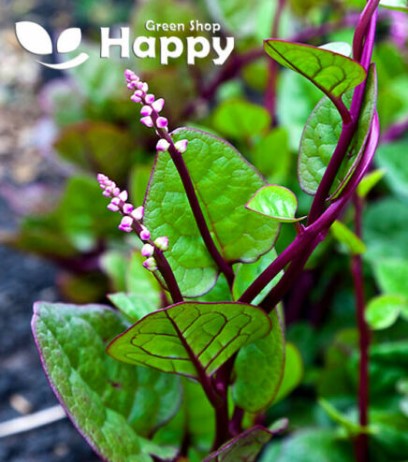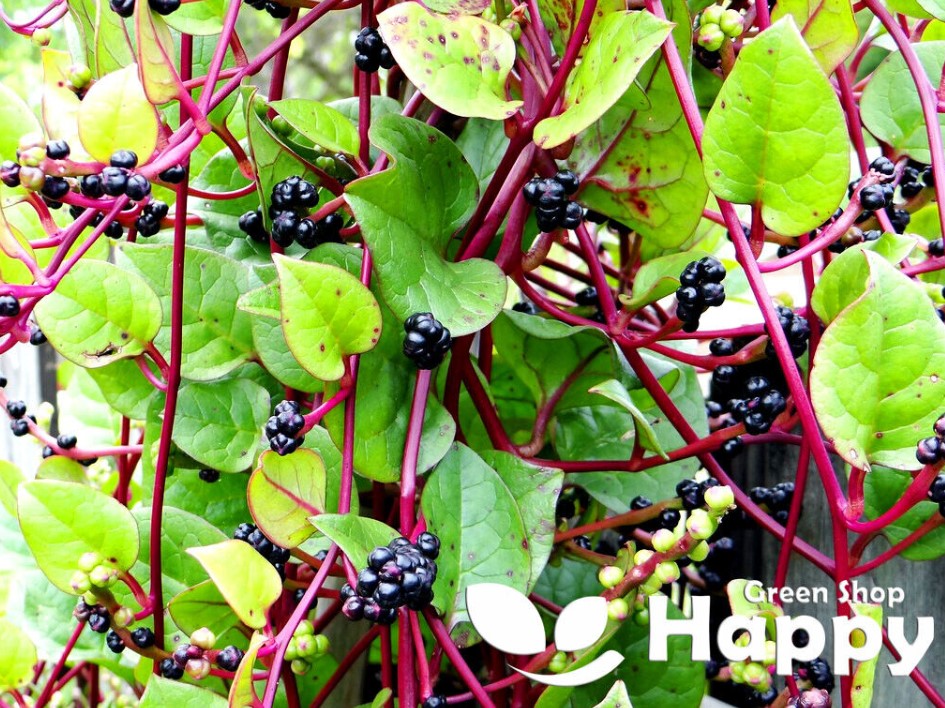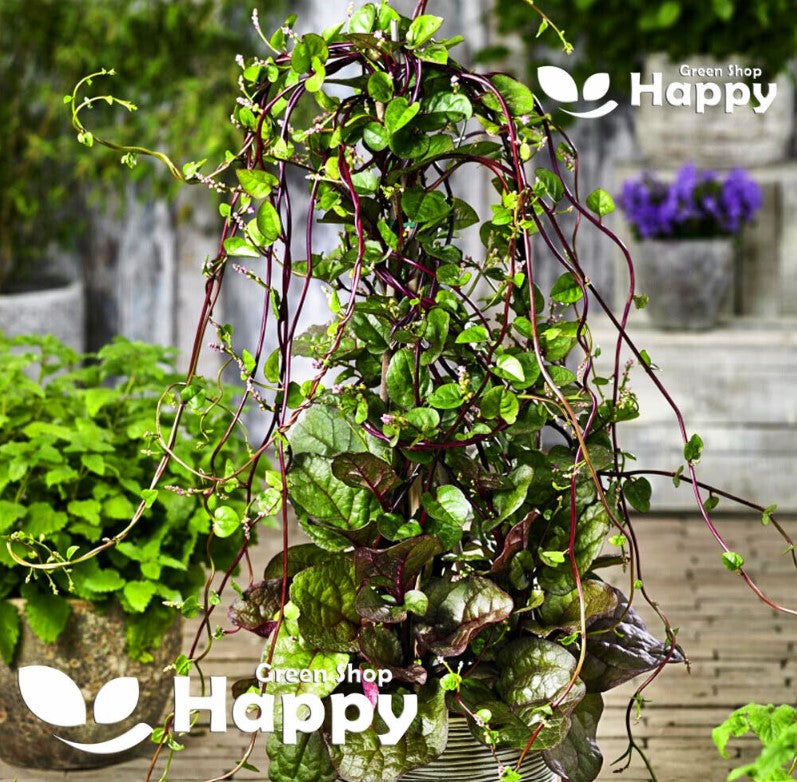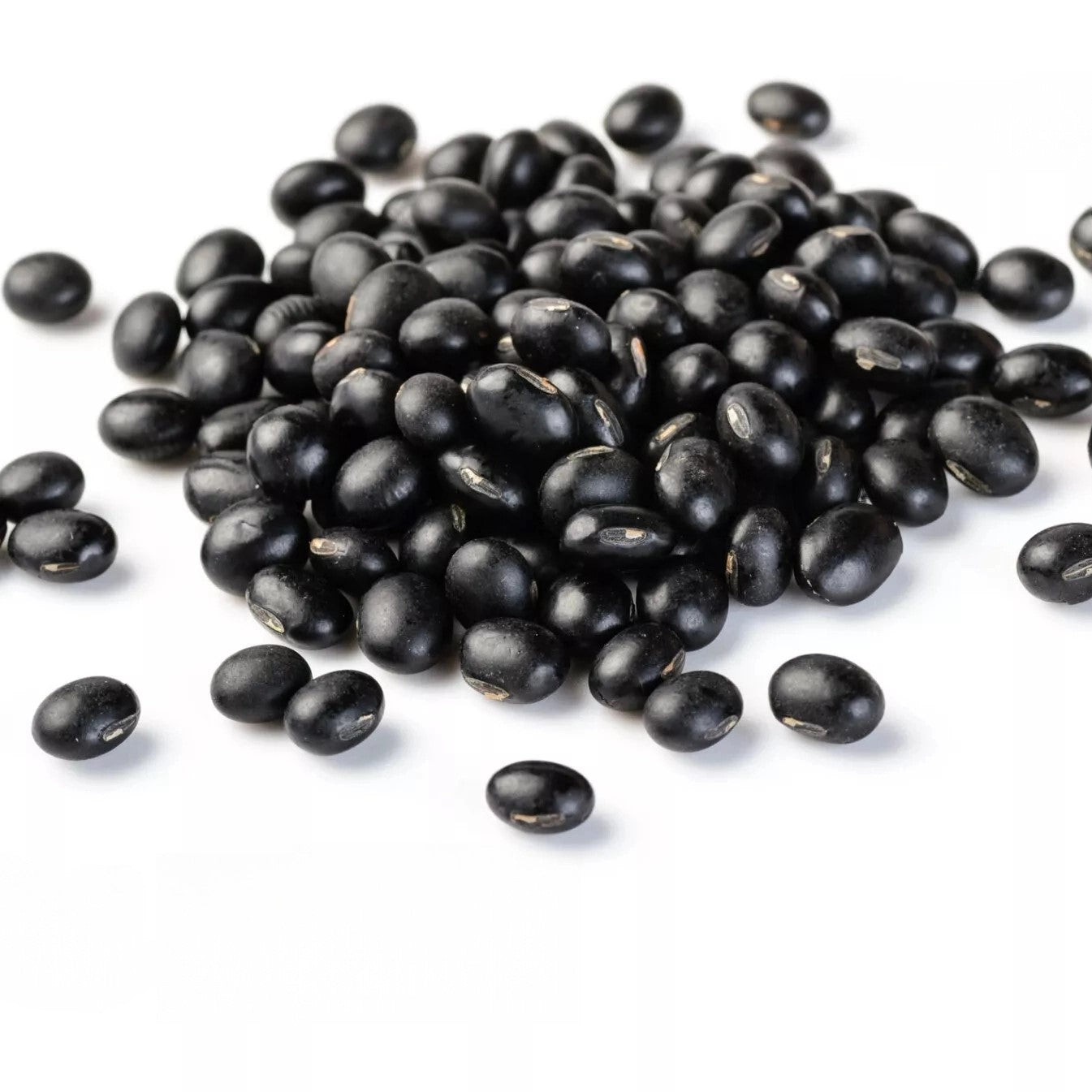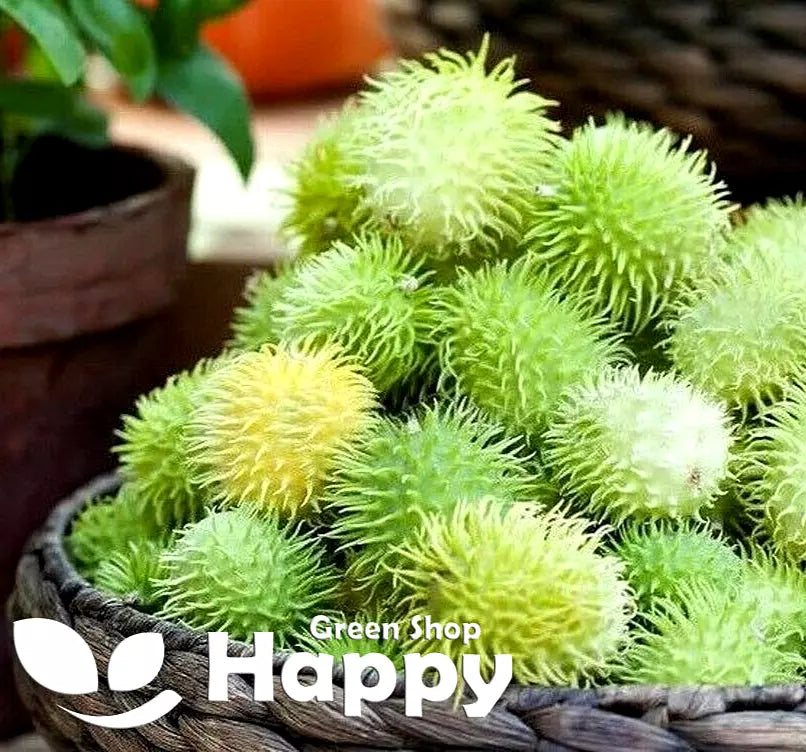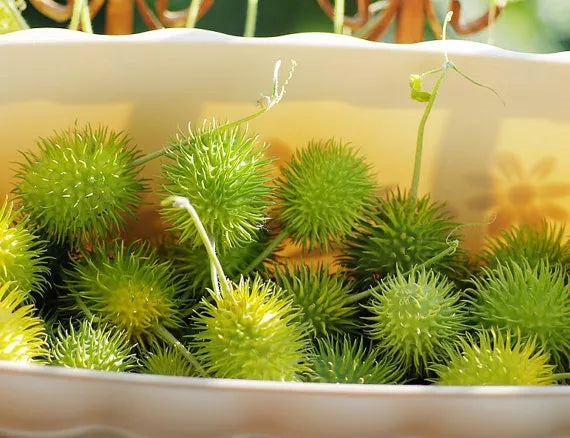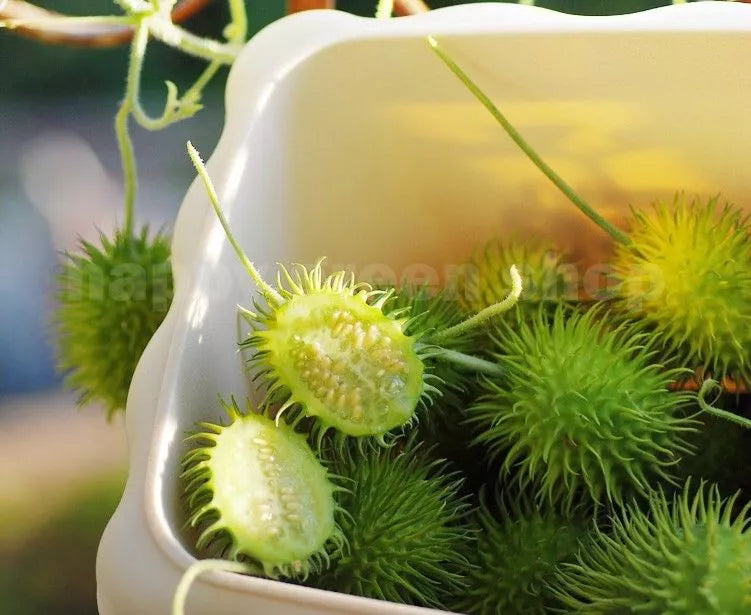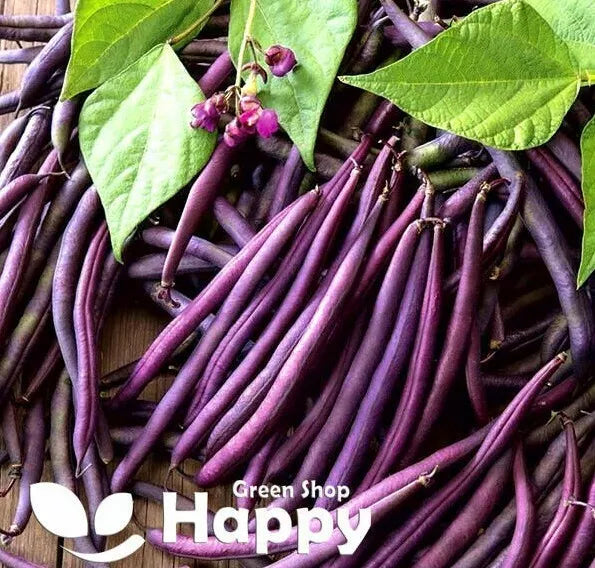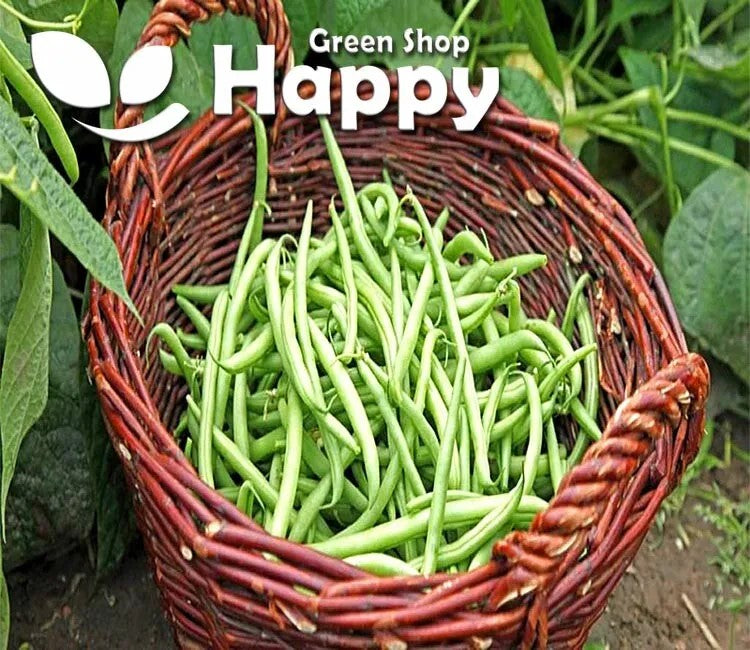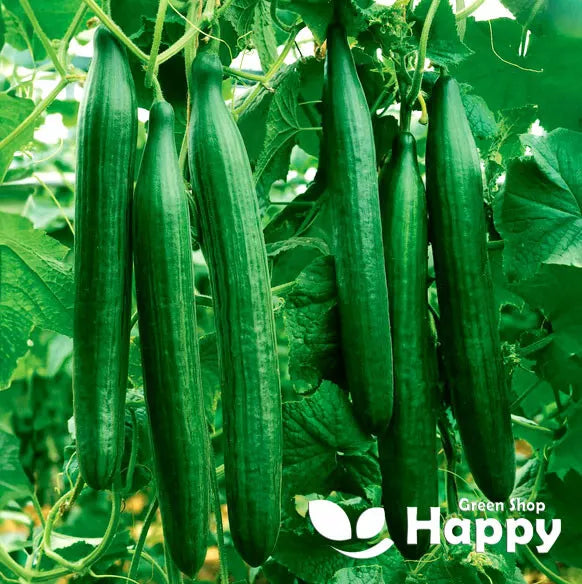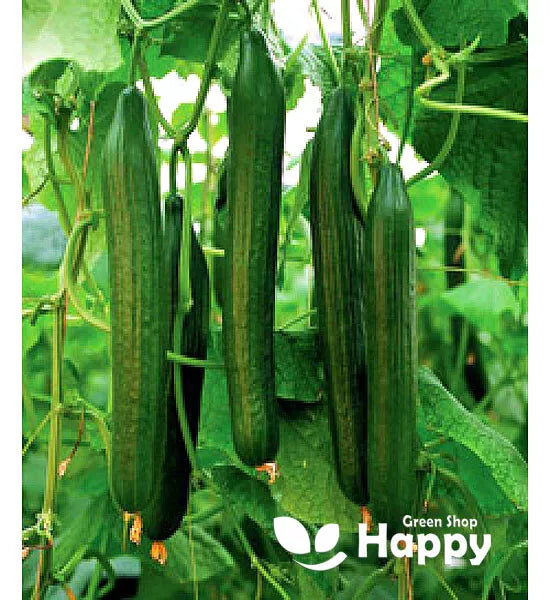Sort by:
30 products
30 products
Malabar Spinach – Seeds (Basella alba)
Malabar Spinach is a fast-growing, tropical vine known for its thick, succulent leaves and high nutritional value. Ideal for salads, stir-fries, soups, and garnishes, this heat-tolerant leafy green thrives where traditional spinach struggles.
Its vigorous climbing habit makes it perfect for trellises, fences, or vertical garden spaces. Malabar Spinach is not only delicious but also adds lush greenery and ornamental appeal to any garden.
How to Grow
-
Sow indoors: February – April
-
Sow outdoors: After last frost, spacing 30–40 cm apart
-
Position: Full sun to partial shade
-
Soil: Fertile, well-drained soil enriched with compost
-
Care: Water regularly; provide support for climbing; pinch tips to encourage bushier growth
Key Features
-
Fast-growing, heat-tolerant leafy green
-
Thick, succulent leaves perfect for salads, stir-fries, and soups
-
Vigorous climbing vine suitable for trellises or fences
-
Adds ornamental greenery to gardens
-
Easy to grow and high-yielding
Harvest
-
Harvesting period: 50–70 days after sowing
-
Pick young leaves regularly for the best flavor and tender texture.
Short Tip
Provide a trellis or support for climbing; regular harvesting promotes continuous growth and keeps leaves tender.
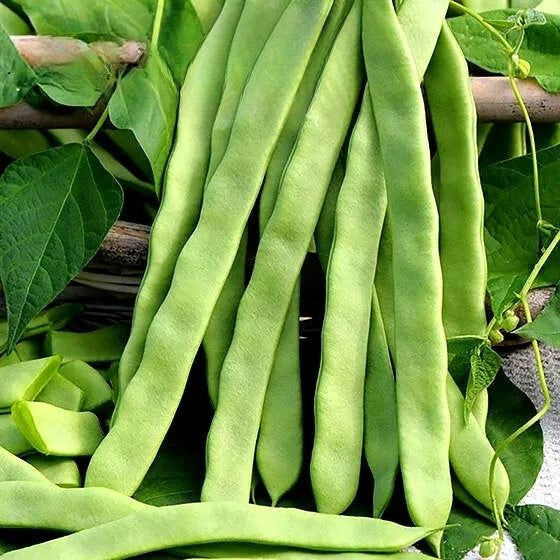
Italian Climbing Black Bean Super Marconi Grano Nero - 20 seeds (Phaseolus vulgaris)
£1.15
Unit price perItalian Climbing Black Bean Super Marconi Grano Nero - 20 seeds (Phaseolus vulgaris)
£1.15
Unit price perItalian Climbing Black Bean 'Super Marconi Grano Nero' – Seeds
(Phaseolus vulgaris) – Heirloom Italian Pole Bean
The ‘Super Marconi Grano Nero’ climbing bean is a traditional Italian variety known for its long, flat pods and striking black beans inside. Highly productive, vigorous, and climbing up to 2–3 meters, it requires staking or trellising. Its pods are tender and delicious when young, while the mature black beans can be dried and stored for hearty soups, stews, and traditional Italian dishes.
Key Features
-
Type: Climbing pole bean (annual legume)
-
Height: 200–300 cm with support
-
Pods: Long, flat, tender, up to 20–25 cm
-
Seeds: Black beans inside when mature
-
Harvest: 65–75 days from sowing
-
Special: Dual-purpose – eat fresh pods or dry beans
Ideal For
-
Fresh harvesting as flat green beans
-
Drying and storing beans for winter dishes
-
Italian and Mediterranean cuisine
-
Vertical gardening with trellises or poles
Sowing & Growing
-
Sow outdoors: May–July, once soil warms (min. 15°C)
-
Spacing: 50 cm between rows, 10–15 cm between plants
-
Support: Needs poles, netting, or trellis
-
Soil: Fertile, well-drained, rich in organic matter
-
Sunlight: Full sun
-
Watering: Consistent, especially during pod setting
Care Tips
-
Harvest young pods regularly to encourage continuous production.
-
Allow some pods to fully mature for drying black beans.
-
Rotate crops yearly to maintain healthy soil.
Hedgehog Gourd – Seeds (Cucumis dipsaceus)
Hedgehog Gourd (Cucumis dipsaceus) is a fast-growing climbing annual prized for its unusual, spiky, ornamental gourds. Perfect for trellises, fences, or pergolas, it adds exotic texture and visual interest to summer gardens. The vibrant foliage and unique fruit make it a conversation-starting feature plant.
Why Grow "Hedgehog Gourd"
-
Distinctive spiky ornamental gourds
-
Fast-growing climber with lush foliage
-
Adds exotic texture and vertical interest
-
Ideal for trellises, pergolas, and fences
Key Features
-
Type: Annual climbing gourd (Cucumis dipsaceus)
-
Height: 2–3 m
-
Flowering/Fruiting: Summer to early autumn
-
Position: Full sun
-
Uses: Trellises, fences, pergolas, ornamental gardens
Ideal For
-
Vertical gardening displays
-
Exotic, unusual garden features
-
Summer pergolas and archways
-
Educational or conversation garden plant
Sowing & Growing
-
Sow indoors: February–April in pots
-
Sow outdoors: April–May after frost
-
Germination: 7–14 days at 20–25°C
-
Provide strong support for climbing
-
Keep soil moist, well-drained, and fertile
Gourd ‘Wildy Weird Warted’ – Seeds (Cucurbita pepo)
Description:
Add quirky charm to your garden with Gourd ‘Wildy Weird Warted’ (Cucurbita pepo). This ornamental variety produces unusual, warted fruits in unique shapes and colors, perfect for autumn displays, crafts, and Halloween decorations. Easy to grow and fast-spreading, these gourds make a fun and creative addition to any garden, while also attracting pollinators during the flowering stage.
Key Features
-
Ornamental gourd with unique warted fruits
-
Fun and quirky shapes and colors
-
Long-lasting autumn display
-
Attracts pollinators during flowering
-
Easy to grow and fast-spreading
Ideal For
-
Autumn garden displays and decorations
-
Halloween crafts and arrangements
-
Containers, fences, and trellises
-
Pollinator-friendly gardens
Sowing & Growing
-
Sow Indoors: March–April
-
Sow Outdoors: After last frost, May
-
Germination: 7–14 days at 18–24°C
-
Spacing: 60–90 cm apart
-
Height/Spread: Vining, up to 3–4 m
-
Light: Full sun
-
Soil: Fertile, well-drained
Care Tips
-
Provide support for climbing vines if needed
-
Water regularly, keeping soil moist but not soggy
-
Fertilize with a balanced fertilizer every 2–3 weeks
-
Harvest mature fruits for decorations before frost
French Bean ‘Purple Queen’ Seeds (Phaseolus vulgaris)
Add vibrant color to your vegetable garden with French Bean ‘Purple Queen’ (Phaseolus vulgaris). This climbing variety produces glossy, deep purple pods that turn green when cooked, offering both visual appeal and tender, flavorful beans. Easy to grow and highly productive, it’s perfect for fresh eating, steaming, or freezing.
How to Grow
-
Sow seeds directly outdoors after the last frost or start indoors 4–6 weeks earlier.
-
Use well-drained, fertile soil in full sun.
-
Plant seeds 2–3 cm deep and 10–15 cm apart, with rows 40–50 cm apart.
-
Provide stakes or a trellis to support climbing growth.
-
Water regularly, especially during flowering and pod development.
-
Harvest pods when young and tender for best flavor.
Key Features
-
Glossy deep purple pods that turn green when cooked
-
Climbing, highly productive variety
-
Easy to grow and maintain
-
Ideal for fresh eating, steaming, or freezing
-
Adds vibrant color and interest to vegetable gardens
Ideal For
-
Vegetable gardens and allotments
-
Fresh harvest, cooking, and freezing
-
Climbing plant displays in garden beds
-
Homegrown culinary use
Sowing
-
Best time: After last frost outdoors or 4–6 weeks earlier indoors
-
Depth: 2–3 cm
-
Spacing: 10–15 cm apart, rows 40–50 cm apart
-
Prefers full sun and fertile, well-drained soil
Quick Tip
-
Regularly pick pods to encourage continuous production and vibrant color.
French Bean ‘Blue Lake’ Seeds (Phaseolus vulgaris)
Harvest crisp, tender beans with French Bean ‘Blue Lake’ (Phaseolus vulgaris). This classic variety produces long, uniform, deep green pods ideal for fresh eating, steaming, or freezing. Easy to grow and highly productive, it’s perfect for vegetable gardens, allotments, and homegrown cooking.
How to Grow
-
Sow seeds directly outdoors after the last frost or start indoors 4–6 weeks earlier.
-
Use well-drained, fertile soil in full sun.
-
Plant seeds 2–3 cm deep and 10–15 cm apart, with rows 40–50 cm apart.
-
Support climbing varieties with stakes or a trellis if needed.
-
Water regularly to keep soil moist, especially during flowering and pod formation.
-
Harvest pods when they are young, tender, and well-filled.
Key Features
-
Long, uniform, deep green pods
-
Highly productive and easy to grow
-
Ideal for fresh eating, steaming, or freezing
-
Hardy and reliable in temperate climates
-
Perfect for vegetable gardens, allotments, and homegrown cooking
Ideal For
-
Vegetable gardens and allotments
-
Fresh harvest, steaming, and freezing
-
Companion planting with nitrogen-fixing crops
-
Homegrown culinary use
Sowing
-
Best time: After last frost outdoors or 4–6 weeks earlier indoors
-
Depth: 2–3 cm
-
Spacing: 10–15 cm apart, rows 40–50 cm apart
-
Prefers full sun and fertile, well-drained soil
Quick Tip
-
Pick pods regularly to encourage continuous production throughout the season.
Cucumber 'Aloe' F1 – Seeds (Cucumis sativus)
Cucumber 'Aloe' F1 is a high-yielding, hybrid cucumber variety known for its smooth, dark green fruits and crisp, refreshing taste. Ideal for fresh salads, pickling, or snacking, this vigorous plant produces uniform, disease-resistant cucumbers throughout the season.
Compact and productive, it is perfect for garden beds, raised beds, or container growing.
How to Grow
-
Sow indoors: February – April
-
Sow outdoors: After last frost, spacing 30–40 cm apart
-
Position: Full sun
-
Soil: Fertile, well-drained soil enriched with compost
-
Care: Water consistently; provide support for vines; mulch to retain moisture
Key Features
-
High-yielding F1 hybrid cucumber with smooth, dark green fruits
-
Crisp and refreshing flavor, perfect for salads and snacking
-
Disease-resistant and vigorous growth
-
Suitable for garden beds, raised beds, or containers
-
Uniform fruits throughout the season
Harvest
-
Harvesting period: 50–60 days after sowing
-
Pick cucumbers when young and tender for the best flavor and texture.
Short Tip
Provide support for climbing and harvest regularly to encourage continuous fruit production.
Cucumber ‘Everest’ – Seeds
(Cucumis sativus) – Reliable F1 Hybrid
The ‘Everest’ cucumber is a highly productive, disease-resistant hybrid that produces slender, dark green cucumbers with a smooth skin and excellent flavor. Ideal for both greenhouse and outdoor cultivation, this variety is well-regarded for its vigorous growth, heavy yields, and resistance to common cucumber diseases such as powdery mildew. Fruits are crisp, refreshing, and perfect for salads, sandwiches, or fresh eating straight from the vine.
Key Features
-
Plant type: Annual, climbing/vining
-
Fruit: Slender, smooth-skinned cucumbers
-
Length: 18–22 cm
-
Color: Dark green
-
Flavor: Crisp, refreshing
-
Position: Full sun
-
Soil: Rich, fertile, well-drained
Ideal For
-
Greenhouse or outdoor growing
-
Fresh salads and raw eating
-
Consistent, high-yield production
-
Gardeners seeking disease-resistant cucumbers
Sowing & Growing
-
Sow indoors: March–April, 1 cm deep in pots.
-
Germination: 7–14 days at 20–25°C.
-
Transplant: May, after last frost.
-
Spacing: 60 cm apart in rows, 150 cm between rows.
-
Harvest: July–September.
Care Tips
-
Provide support (trellis or netting) for climbing vines.
-
Water consistently; keep soil moist but not soggy.
-
Feed with a high-potash fertilizer regularly once flowering starts.
-
Pick fruits frequently to encourage further cropping.
Cucumber 'Telegraph Improved' – Seeds (Cucumis sativus)
Enjoy crisp, tender cucumbers with Cucumber 'Telegraph Improved', a classic English variety renowned for its long, slender, dark green fruits and mild, sweet flavor. Ideal for fresh salads, sandwiches, and pickling, this variety is highly productive and resistant to common cucumber diseases. Perfect for home gardens, allotments, or greenhouse cultivation.
How to Grow
. Sow indoors: March – May, 1–2 cm deep in pots
. Transplant outdoors: After last frost or grow under cloche/greenhouse for best results
. Sow outdoors: May – June in fertile, well-drained soil
. Provide support such as a trellis or frame for climbing
. Keep soil moist and feed regularly for abundant harvests
Key Features
. Classic English cucumber with long, dark green fruits
. Mild, sweet flavor suitable for salads and fresh eating
. Highly productive and disease-resistant
. Ideal for greenhouse or outdoor trellis growing
. Reliable, uniform fruits perfect for slicing
Ideal For
. Fresh salads, sandwiches, and summer meals
. Home gardeners and allotment plots
. Greenhouse cultivation for early and high-yield crops
. Pickling and culinary versatility
Sowing & Harvest
. Sow: March – June
. Harvest: June – September
Quick Tip
Harvest regularly when fruits are firm and uniform in size to encourage continuous production throughout the season.
Showing 27/30




